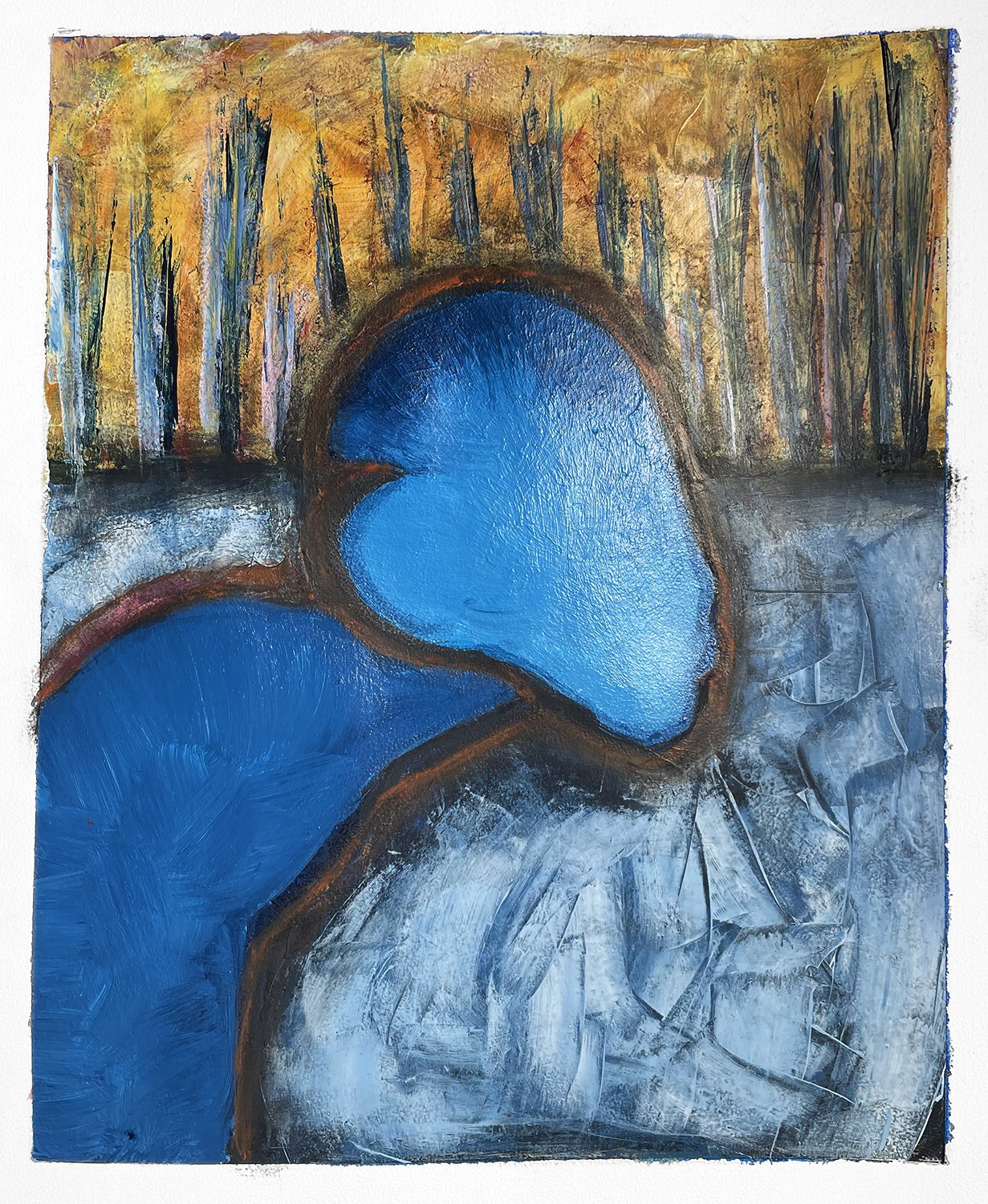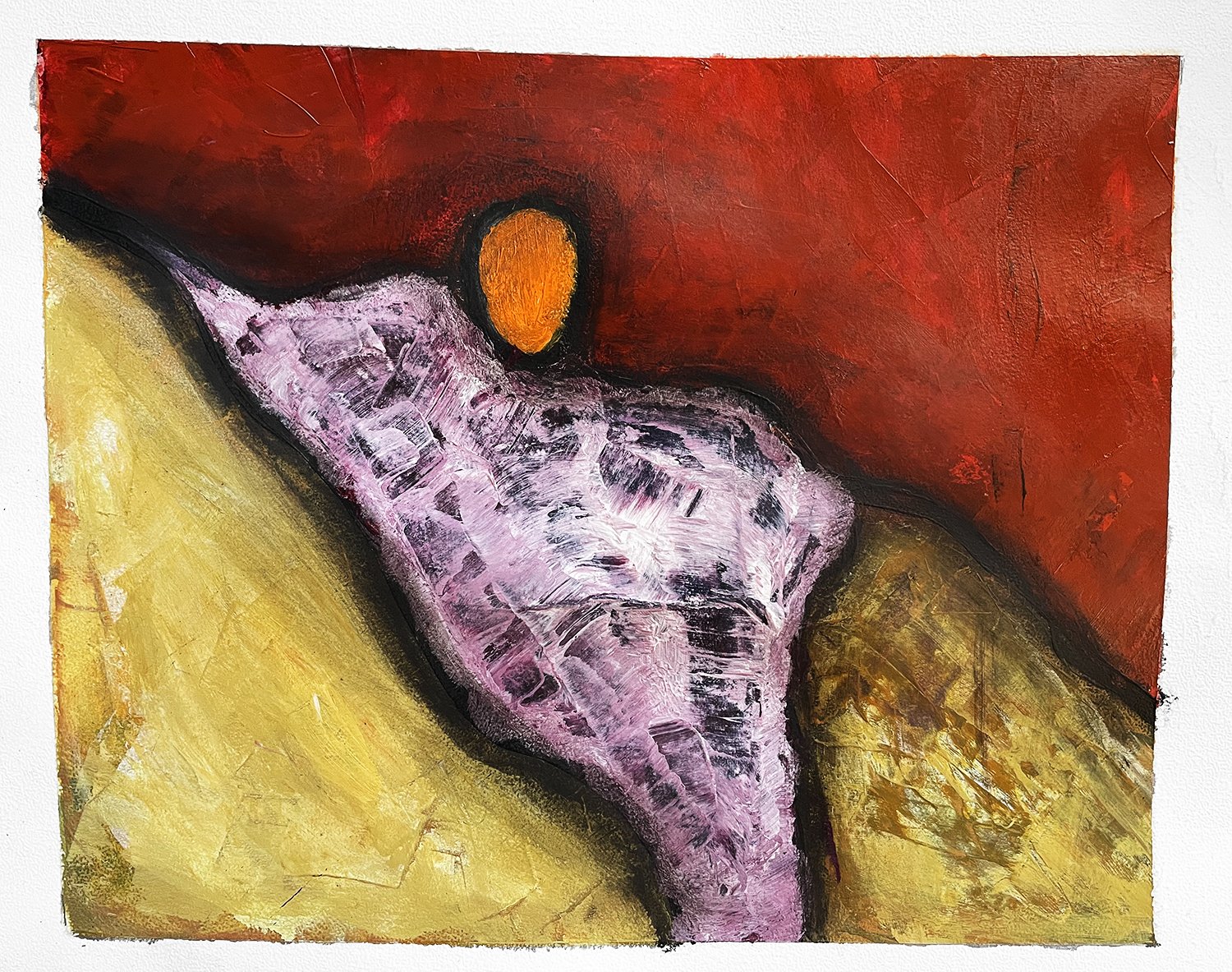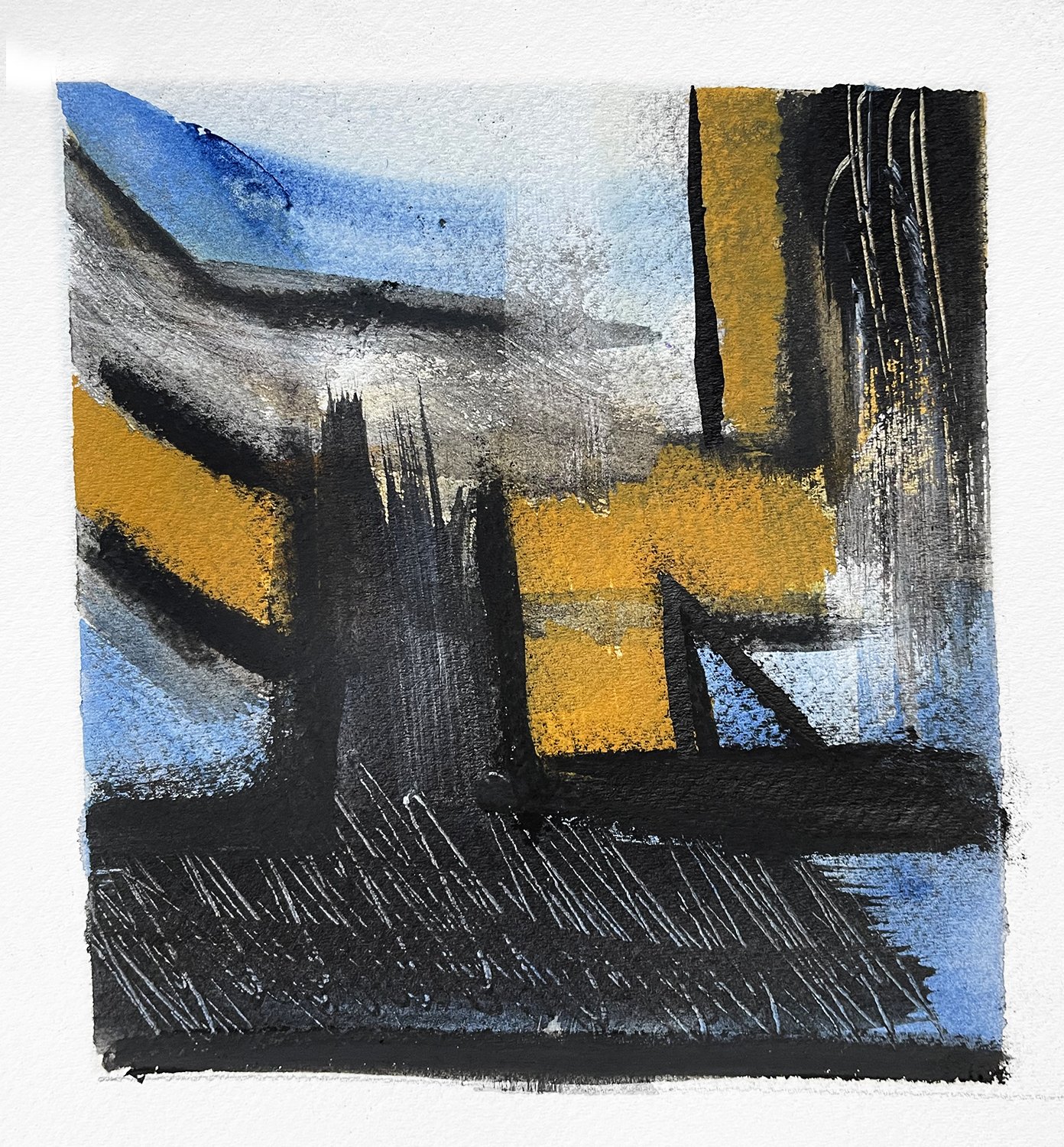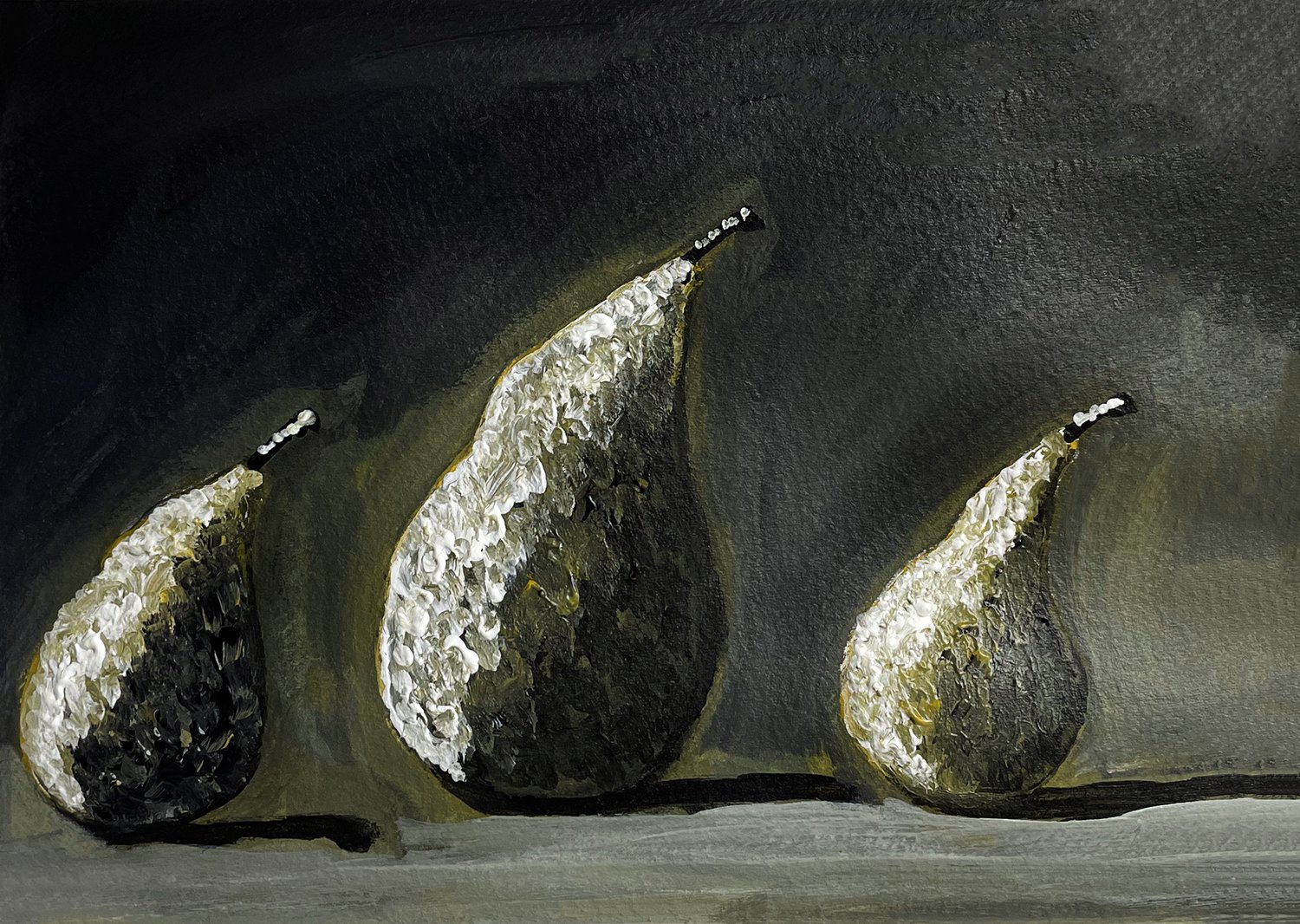I paint every day. Sometimes, I’m able to make two or even three paintings a day. Mostly, I do “warm up” paintings: ideas for possibly larger pieces in the future. These “paint sketches” are really important for me. They do two things: first, they allow me to apply paint, make marks, and give me ideas for larger pieces (as I said). Secondly, I get better with each painting. With every painting I make, I learn something. One thing I’ve realized (probably from making photographs for years) is that I’m too “uptight” and too rigid. I’m slowly learning to reverse this; it’s difficult. In a lot of ways, I’m trying to unlearn what I did in photography. Yes, there are a lot of things that help me because of my knowledge of photography, light, composition, and even color theory. But there are a few things that make painting difficult; one of them is rigidity. I’m learning to loosen up and allow spontaneous and free-flowing movements and experiments to happen. It’s a great feeling.
I turn 60 years old this month. I was thinking about this the other day. It’s a strange feeling in some ways. It seems for the last decade I’ve been revisiting events of my youth, or at least exploring my interests as a younger adult. After my military service, I started a business making free-standing wood-burning stoves and fireplace inserts. I oversaw a shop of four welders and two finish line people. I made good money and enjoyed the work. I built hundreds of stoves myself and was efficient and skilled in metal fabrication. I was also proficient in all kinds of welding, including MIG, TIG, and stick welding, as well as brazing and other minor metal fabrication skills. This came to an end because of environmental issues concerning emissions and laws passed that prevented the sale of the stoves (the late 1980s). I ended up at the university, which, in the end, was a good thing.
A few years ago, I started metal fabrication again. I was doing blacksmithing and bladesmithing work. People asked, “Where did you learn to do this kind of thing?” They seemed to be a bit shocked and puzzled. It wasn’t either for me; it was taking a step back to my younger years and revisiting the skills and knowledge that I spent so much time doing. I’m not sure why I did it—maybe to clear my head and create in a different way. It just felt right and comfortable. I really enjoyed the nostalgia and feelings of shaping steel and working around a hot forge and welder again. It wasn’t foreign or weird to me at all.
That brings me to painting. Again, some people are wondering, "What is this all about?” Well, remember, I did four years at undergraduate school, and I majored in photography, visual art, and communication (with a minor in Spanish). In that emphasis of visual art, I did the introductions to painting, drawing, color theory, art history, etc. I also completed 8 credit hours of “studio art.” I did painting and mixed media, with a lot of photography involved. Along with those courses, I completed two courses in “painting on photographs,” a beginning course and an advanced course. And I also have a graduate degree, an M.F.A.I.A. That’s a master of fine arts in interdisciplinary art. That is self-explanatory, I think. My point is that I have a history of what I’m doing and have been doing. I’m simply revisiting my past and using it to flesh out my new work and project. And I love it. If I take up surfing or paragliding, you’ll know I’m in unfamiliar waters (no pun).
I find it interesting that people tend to want you to stay in the lane they “know you for,” and when you veer from that, it seems a bit apostate to them—some even seem disappointed. If they understood your background and life experiences, they might think differently. In the end, it doesn’t matter. I just thought I would share what I’d been thinking about entering my sixth decade on this pale blue dot. It’s not surprising that I find myself painting or making knives; at least to me, it seems like a kind of natural course of self-exploration. It’s paid off for me both mentally and conceptually. It’s given me more to work with on this project.
Thirty paintings a month. It’s not about the number; it’s not even relevant, really. It’s about commitment, learning, and growing. As I said earlier, I gain so much from each painting I do. I’m trying to be present for the journey. To really be grateful and appreciate each day and each piece of work I make. Ultimately, that’s what’s important to me. Painting, like photography, is something you have to practice to become efficient enough to accomplish what you want to accomplish. In the end, I hope to publish several of my paintings, along with my photographs, in my book to make a complete, cohesive, interdisciplinary work about human behavior and existential terror. That’s my goal.
One more thing. I’ve posted a few times about how beneficial our walks are to me creatively. You might find this article interesting if you subscribe to this theory about walking and creativity. Check it out:
How Walking Fosters Creativity




















